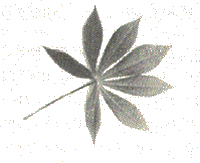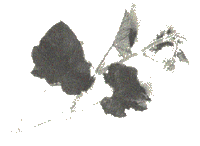by Dr Angelika Dietz.
Wild edible plants and leafy vegetables often make an important contribution to the diet, particularly in a rural population. This can often be overlooked by community workers. The role of wild edible plants in the diet is described here for the subsistence farming community of Magar, living in a remote area of the mid-west region of Nepal.
The staple food of this group was maize. They also ate some rice, millet, wheat and pulses. Meat (mainly pork) was consumed only occasionally on a few festival days during the year. Milk and milk products were rare. If available, they were given first to the children. Most of the eggs were used for hatching. The meat of chickens was reserved for guests or for religious ceremonies. Vegetables were traditionally grown in fields around the village. Pumpkins and their leaves, rape leaves, radish and its leaves, potatoes and taro (a kind of yam) as well as snake gourds, sponge gourds and bitter gourds were the main vegetables consumed.
On average, people had enough to eat from what they grew in their fields, for eight to nine months of the year. But during the dry season from February to June, many people had to purchase staple foods. This time of food scarcity was also a time when people had to work very hard in cultivating their land. Money to buy food came from the sale of goats, spices, fruits and handicrafts.
People who did not have the funds to buy sufficient food to feed their families had to dig for starchy roots in the forests. But most families also picked leaves and flowers in the forests to improve their diet of starchy food. Although they did this in the hot, dry season before the monsoon, many of the wild plants grew new shoots and flowers at that time.
In a detailed study carried out by the author, at least 24 different wild edible plants were identified, which were collected and eaten by village people. These fruits and vegetables were not only improving the taste of the diet, but they also provided vital nutrients.
Almost all green leaves are a good source of protein, vitamins and minerals, but dark green leaves usually have a greater food value than light green leaves. For example, dark green amaranth, which grows wild in many parts of the world, is more nutritious than pale green European cabbage. The protein value of leaves can be relatively high - about equal to that of seeds - if calculated on a dry-matter basis. Problems due to vitamin deficiency were unusual among the Magar, due to the high vitamin A and B content of the wild edible leaves.
An average portion of leaves of 100g provides sufficient iron for a small child each day and contributes considerably to the recommended intake of an adult. Some green leaves of very good nutritional value are shown above.
Usually, special methods of preparation and cooking of local vegetables have developed by experience, over generations, to make them edible. Most green leaves need only a short cooking time, either in a small volume of salty water or when stir-fried.
Some leaves, such as taro or cassava, are very bitter or cause the mouth to itch or burn. They need to be prepared in a special way:
- Wash leaves and place in a pot with enough water to cover.
- Bring to the boil and boil for 5-10 minutes with the lid off.
- Drain the water off and throw it away.
- Add enough fresh water to cover the leaves again, add a little salt and spices as desired, put a lid on and steam gently until tender (15-20 minutes).
The Magar use a similar method to prepare taro leaves - the leaves are not cut into pieces, but rolled and the ends tied together. Then they are well cooked in water, without stirring.
Leafy vegetables with dark green leaves should be grown in all home gardens. Wild edible plants play an important role in the diet of many communities in developing countries and their use should be encouraged. But one should be aware that they can thrive only when their environment - the forest - is saved.
THESE LEAVES ARE GOOD FOR YOU!
Amaranth (tropical spinach)











